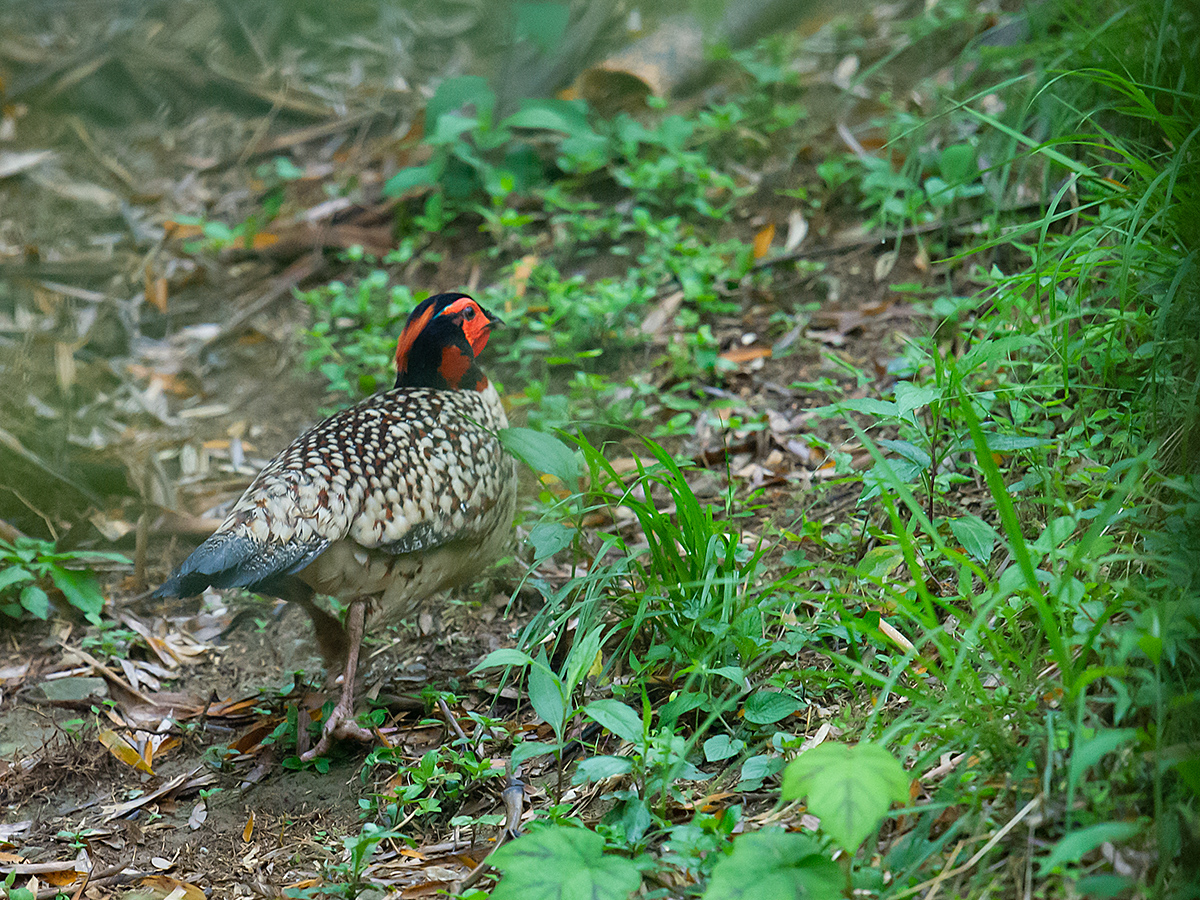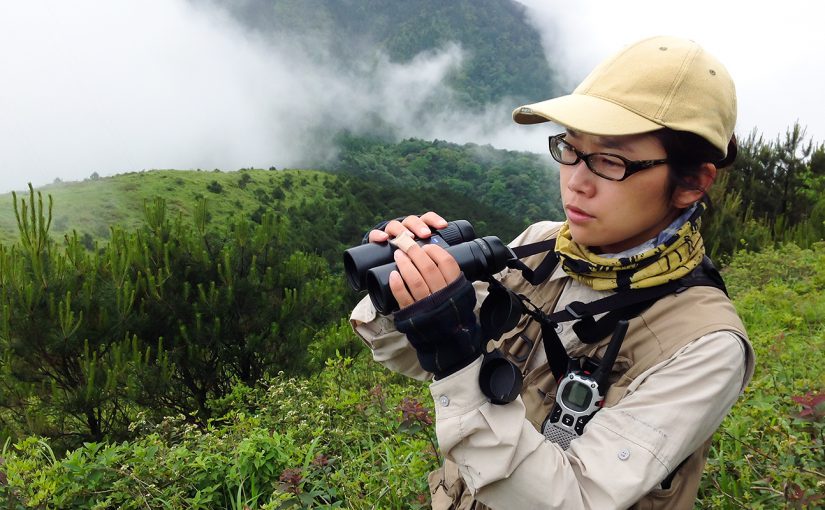Emeifeng, a mountain in Fujian 635 km (395 miles) southwest of Shanghai, ranks high on Shanghai birders’ must-see lists. It is a reliable site for Cabot’s Tragopan, Elliot’s Pheasant, and White-necklaced Partridge, and its vast forests provide habitat for other key southeastern Chinese species. A bit too far to drive, a bit too close to fly, Emeifeng is the perfect expedition for the high-speed train.
This post covers 30 April to 3 May, the first of my two four-day trips to the mountain. A post on the second trip, which took place 28 to 31 May, is here.
The photo above shows my partner Elaine Du searching for Brown Bush Warbler in the pristine alpine scrub on Emeifeng, elev. 1650 m (5,410 ft.). — Craig Brelsford
by Craig Brelsford
Founder, shanghaibirding.com
HIGHLIGHTS
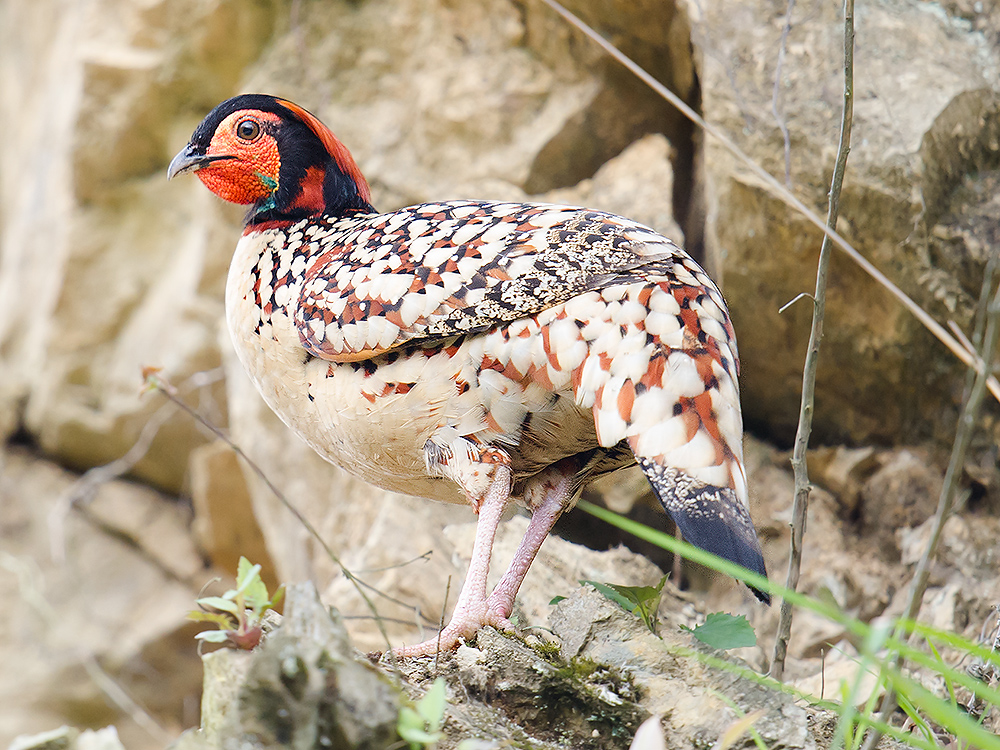
• Closely studying four Phylloscopus warblers that breed in southern China: Buff-throated Warbler Phylloscopus subaffinis, Sulphur-breasted Warbler P. ricketti, Hartert’s Leaf Warbler P. goodsoni fokiensis, and White-spectacled Warbler P. intermedius
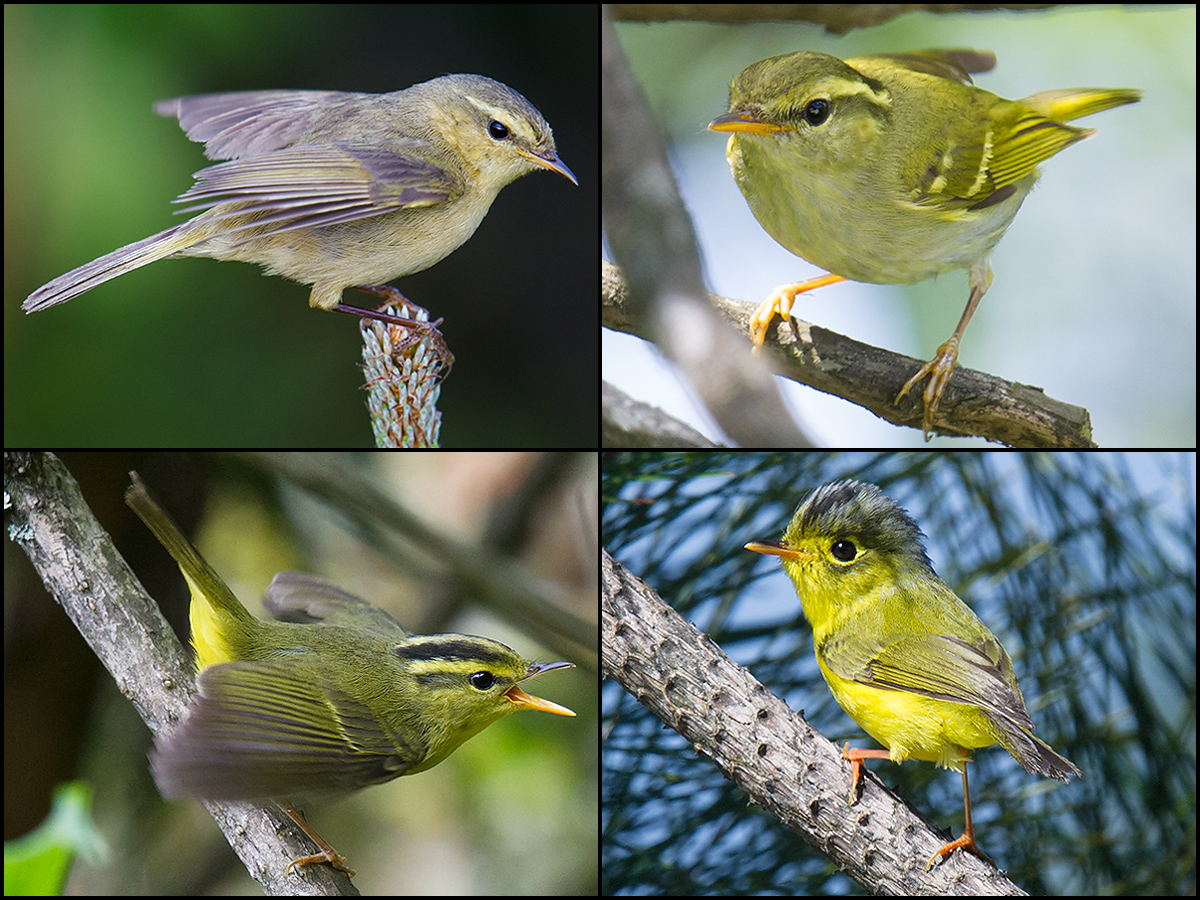
• At Shuibu Reservoir, finding Blue-throated Bee-eater, a species unexpected around Emeifeng
• Finding 4 of China’s 5 species of forktail: Little Forktail Enicurus scouleri, Slaty-backed Forktail E. schistaceus, White-crowned Forktail E. leschenaulti sinensis, and Spotted Forktail E. maculatus bacatus
• Hearing the many calls and songs of the accomplished vocalist Buffy Laughingthrush
• Hearing Spotted Elachura singing along a rushing stream
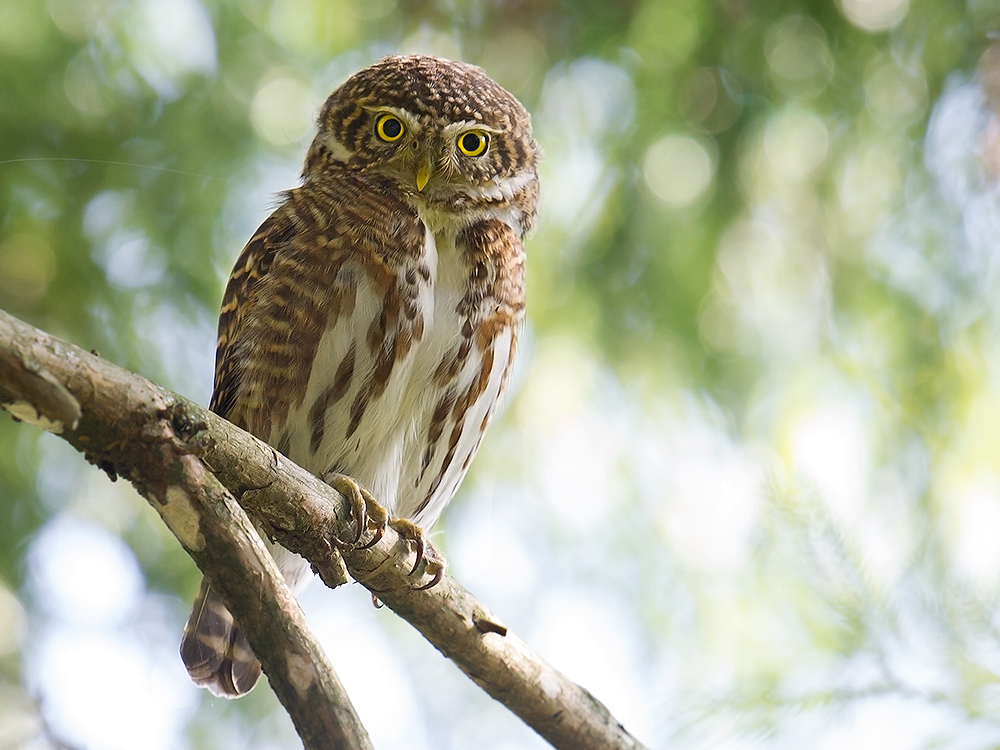
• Noting 103 species, 81 on the first trip, 86 on the second. Among the birds we found were key southern Chinese species such as Black Bittern, Mountain Hawk-Eagle, Great Barbet, Yellow-cheeked Tit, Sultan Tit, Brown Bush Warbler, Small Niltava, Verditer Flycatcher, Blyth’s Shrike-babbler, White-bellied Erpornis, and Grey-sided Scimitar Babbler
• Enjoying the clean air and unspoiled beauty of Emeifeng
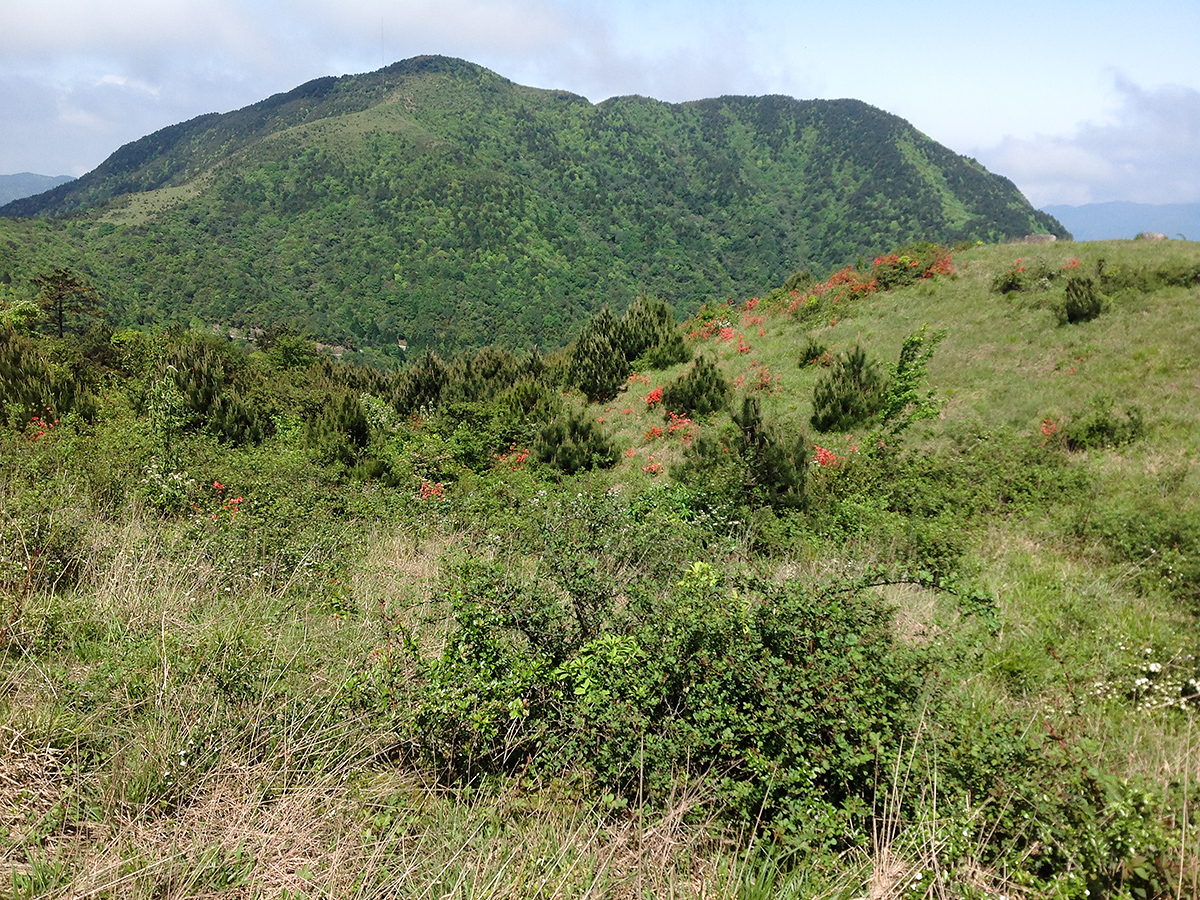
SPECIES OF BIRD NOTED BY CRAIG BRELSFORD AND ELAINE DU, EMEIFENG, APRIL–MAY 2015 (103 SPECIES)
Hyperlinks connect to entries in shanghaibirding.com founder Craig Brelsford’s Photographic Field Guide to the Birds of China, published in its entirety on this website:
Mandarin Duck Aix galericulata
White-necklaced Partridge Arborophila gingica
Chinese Bamboo Partridge Bambusicola thoracicus
Cabot’s Tragopan Tragopan caboti
Koklass Pheasant Pucrasia macrolopha
Silver Pheasant Lophura nycthemera
Elliot’s Pheasant Syrmaticus ellioti
Black Bittern Ixobrychus flavicollis
Chinese Pond Heron Ardeola bacchus
Eastern Cattle Egret Bubulcus coromandus
Little Egret Egretta garzetta
Mountain Hawk-Eagle Nisaetus nipalensis
Black Eagle Ictinaetus malaiensis
Crested Goshawk Accipiter trivirgatus
Chinese Sparrowhawk A. soloensis
Besra A. virgatus
Feral Pigeon (Rock Dove) Columba livia
Oriental Turtle Dove Streptopelia orientalis
Spotted Dove Spilopelia chinensis
Large Hawk-Cuckoo Hierococcyx sparverioides
Lesser Cuckoo Cuculus poliocephalus
Collared Owlet Glaucidium brodiei
Asian Barred Owlet G. cuculoides
House Swift Apus nipalensis
Oriental Dollarbird Eurystomus orientalis
Common Kingfisher Alcedo atthis
Crested Kingfisher Megaceryle lugubris
Blue-throated Bee-eater Merops viridis
Great Barbet Psilopogon virens
Speckled Piculet Picumnus innominatus
Grey-capped Pygmy Woodpecker Yungipicus canicapillus
Bay Woodpecker Blythipicus pyrrhotis
Grey-chinned Minivet Pericrocotus solaris
Brown Shrike Lanius cristatus
White-bellied Erpornis Erpornis zantholeuca
Blyth’s Shrike-babbler Pteruthius aeralatus
Black-naped Oriole Oriolus chinensis
Black Drongo Dicrurus macrocercus
Eurasian Jay Garrulus glandarius
Red-billed Blue Magpie Urocissa erythroryncha
Grey Treepie Dendrocitta formosae
Sultan Tit Melanochlora sultanea
Japanese Tit Parus minor
Yellow-cheeked Tit Machlolophus spilonotus
Collared Finchbill Spizixos semitorques
Light-vented Bulbul Pycnonotus sinensis
Mountain Bulbul Ixos mcclellandii
Chestnut Bulbul Hemixos castanonotus
Black Bulbul Hypsipetes leucocephalus
Barn Swallow Hirundo rustica
Red-rumped Swallow Cecropis daurica
Pygmy Cupwing Pnoepyga pusilla
Rufous-faced Warbler Abroscopus albogularis
Black-throated Bushtit Aegithalos concinnus
Buff-throated Warbler Phylloscopus subaffinis
Pallas’s Leaf Warbler P. proregulus
Yellow-browed Warbler P. inornatus
Two-barred Warbler P. plumbeitarsus
Hartert’s Leaf Warbler P. goodsoni
Sulphur-breasted Warbler P. ricketti
White-spectacled Warbler P. intermedius
Chestnut-crowned Warbler P. castaniceps
Brown Bush Warbler Locustella luteoventris
Yellow-bellied Prinia Prinia flaviventris
Grey-sided Scimitar Babbler Pomatorhinus swinhoei
Streak-breasted Scimitar Babbler P. ruficollis
Rufous-capped Babbler Cyanoderma ruficeps
Dusky Fulvetta Alcippe brunnea
Huet’s Fulvetta A. hueti
Red-billed Leiothrix Leiothrix lutea
Chinese Hwamei Garrulax canorus
Greater Necklaced Laughingthrush Pterorhinus pectoralis
Buffy Laughingthrush P. berthemyi
Masked Laughingthrush P. perspicillatus
Grey-headed Parrotbill Psittiparus gularis
Indochinese Yuhina Yuhina torqueola
Black-chinned Yuhina Y. nigrimenta
Spotted Elachura Elachura formosa
Crested Myna Acridotheres cristatellus
Red-billed Starling Spodiopsar sericeus
Black-collared Starling Gracupica nigricollis
Chinese Blackbird Turdus mandarinus
Oriental Magpie-Robin Copsychus saularis
Small Niltava Niltava macgrigoriae
Verditer Flycatcher Eumyias thalassinus
Mugimaki Flycatcher Ficedula mugimaki
Little Forktail Enicurus scouleri
Slaty-backed Forktail E. schistaceus
White-crowned Forktail E. leschenaulti
Spotted Forktail E. maculatus
Blue Whistling Thrush Myophonus caeruleus caeruleus
Plumbeous Water Redstart Phoenicurus fuliginosus
Blue Rock Thrush Monticola solitarius
Chestnut-bellied Rock Thrush M. rufiventris
Grey Bush Chat Saxicola ferreus
Brown Dipper Cinclus pallasii
Orange-bellied Leafbird Chloropsis hardwickii
Fire-breasted Flowerpecker Dicaeum ignipectus
Fork-tailed Sunbird Aethopyga christinae
Eurasian Tree Sparrow Passer montanus
White-rumped Munia Lonchura striata
Scaly-breasted Munia L. punctulata
Grey Wagtail Motacilla cinerea
White Wagtail M. alba
THE TRIP
Wed. 29 April
Taining
Elaine Du and I took the high-speed train from Hongqiao Railway Station in Shanghai to Nanchang, capital of Jiangxi. There, we transferred to the train to Taining. We checked in to the perfectly adequate Huada Hotel (Huádà Jiǔdiàn [华大酒店], +86 598-7817777).
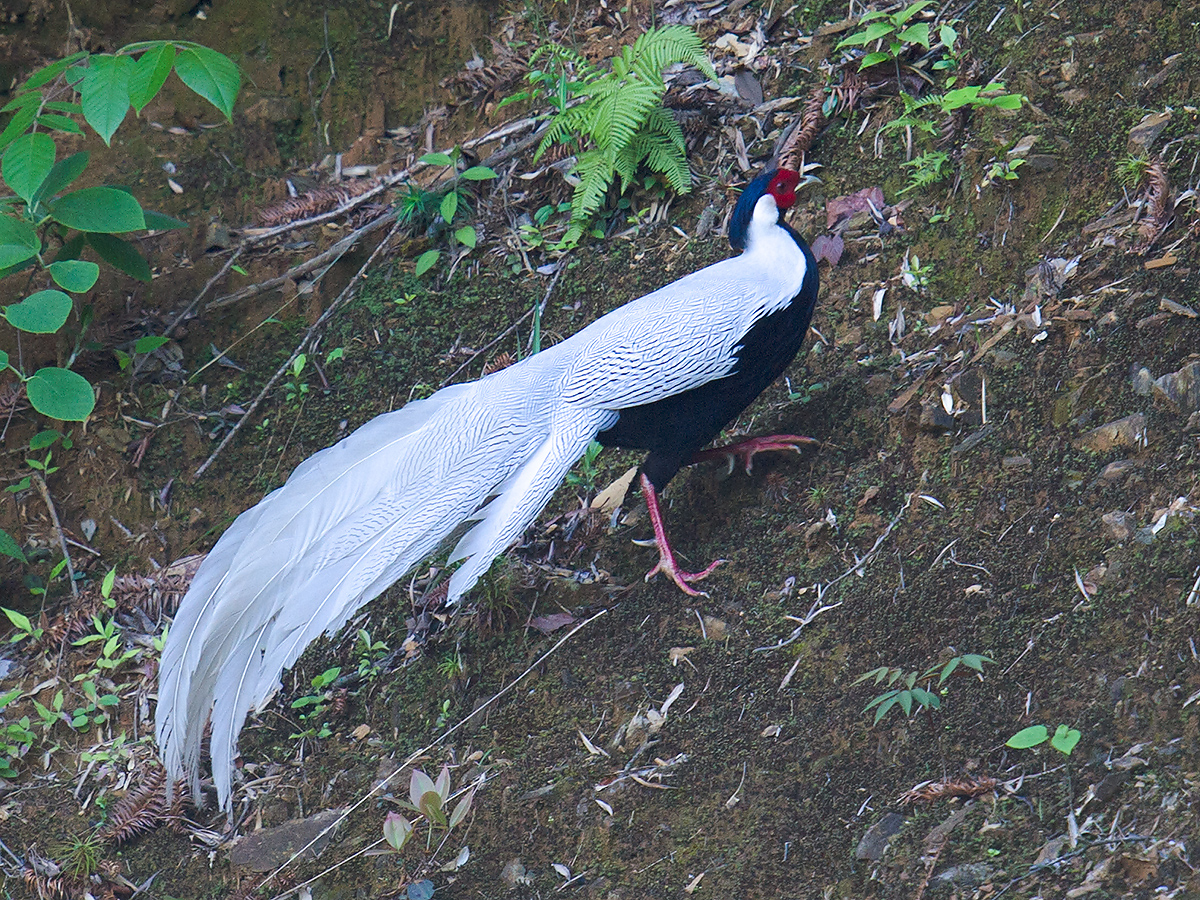
What a first day at Emeifeng! Elaine and I noted 49 species. We heard White-necklaced Partridge, saw Silver Pheasant, photographed Buff-throated Warbler and Collared Owlet, and missed Cabot’s Tragopan and Elliot’s Pheasant. We got close views and good sound-recordings of White-spectacled Warbler, and we found a pair of Small Niltava.
Elaine and I drove up the mountain this morning with our easygoing driver, Dèng Zhōngpíng (邓忠平, +86 138-6059-6327; no English, non-smoker). The 30 km (19 mi.) trip from Taining to Emeifeng started at Huada Hotel. In the lower country we found Chinese Sparrowhawk and Oriental Dollarbird. We saw the single male Silver Pheasant at elev. 1150 m (3,770 ft.). Just below the end of the road at elev. 1450 m (4,760 ft.), a bird wave included 2 stunning Yellow-cheeked Tit, the Small Niltava, and the Collared Owlet.
At the top we met Steven An, who was leading a bird tour that included Tony Sawbridge. After those birders left, we had the lodge area to ourselves. Large Hawk-Cuckoo were uttering their mad cry of “Brain fever!” 2 Black Eagle were soaring elegantly above. A Crested Goshawk appeared briefly.
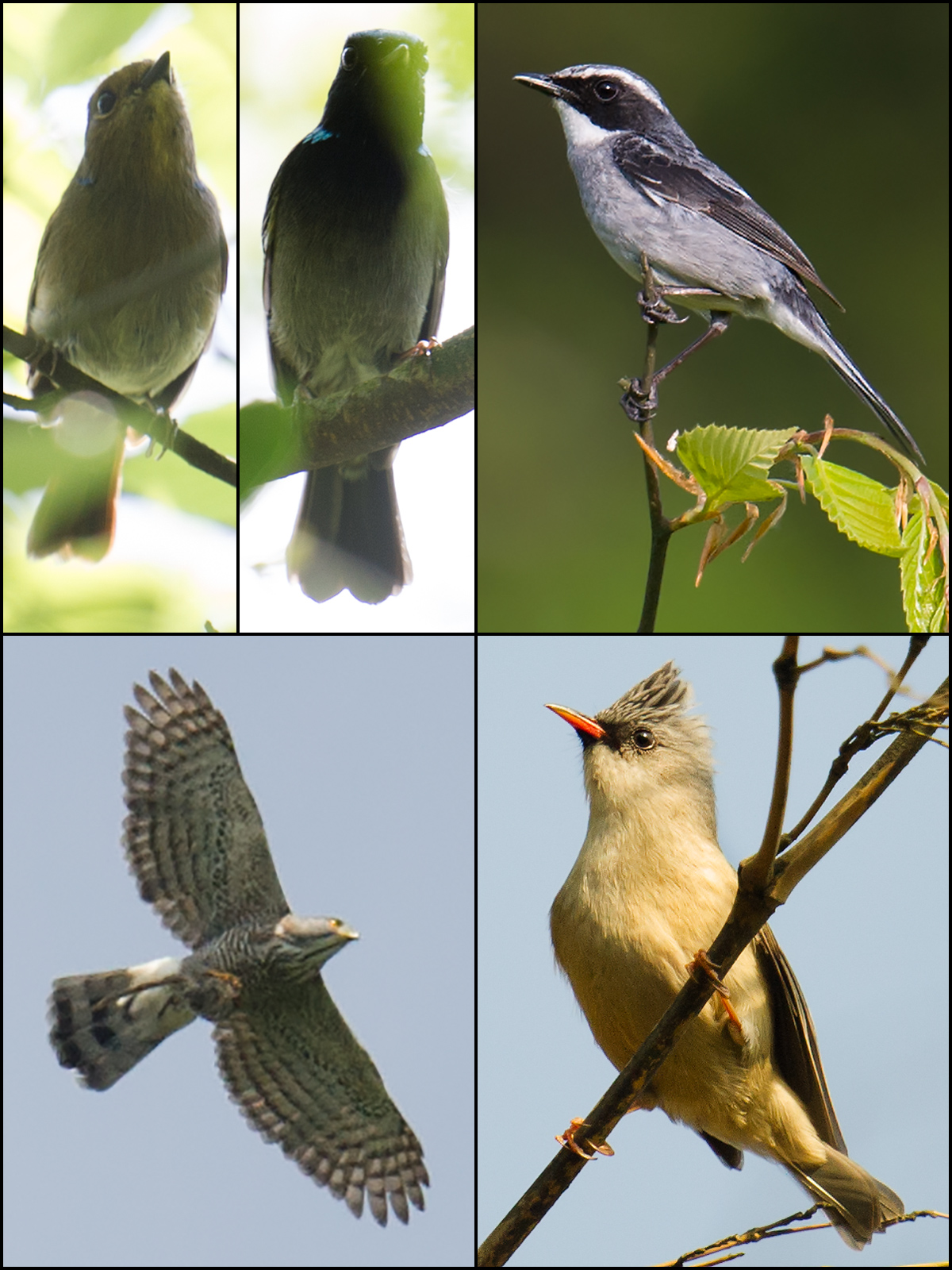
The morning fog burned off, revealing a brilliant blue sky. As the forenoon wore on, the birds retired. Elaine and I walked down a wide trail, seeing no one, reveling in the solitude, peacefulness, and unspoiled beauty of Emeifeng. We found 2 Mugimaki Flycatcher and the White-spectacled Warbler. A comparison of our recordings with those of Frank Lambert helped us ID our White-spectacled Warbler.
In the late afternoon, we found Buff-throated Warbler in a big tree near the boardwalk leading to the temple. 2 Grey Bush Chat were also using the tree.
White-necklaced Partridge were heard at various places throughout the day.
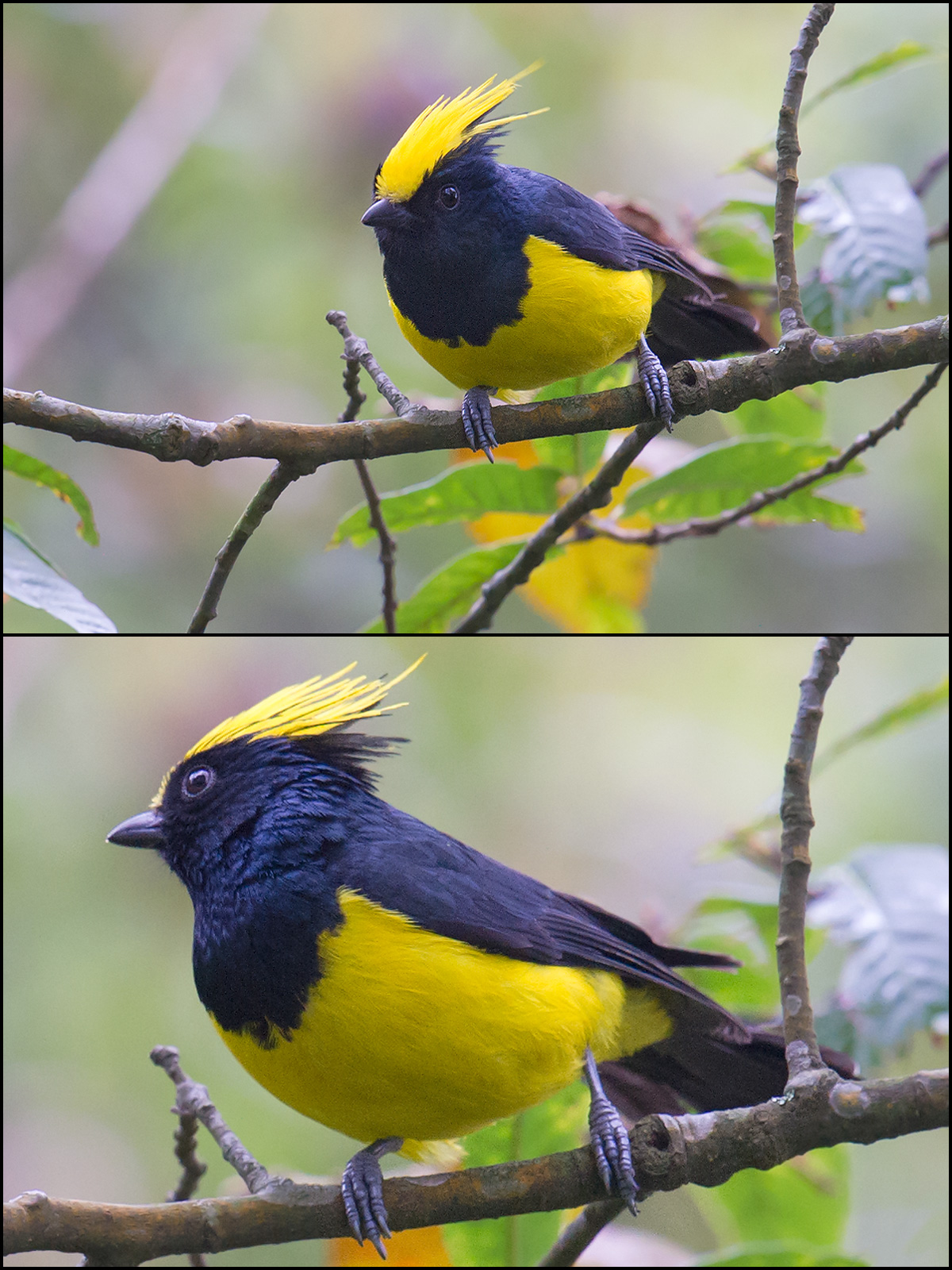
Rain and fog kept species count low (37), but the species we found were good ones, with Cabot’s Tragopan leading the list. We heard Spotted Elachura. Elaine was much impressed by Sultan Tit, and she had a close encounter with Koklass Pheasant. 9 Silver Pheasant tiptoed through the bamboo forest.
A Sulphur-breasted Warbler helped us find the Koklass Pheasant. Driving slowly up the mountain road at a point about 1250 m (4,100 ft.) above sea level, we heard birdsong unfamiliar to us. I walked downhill toward the sound, and Elaine walked straight to the edge of the road. There she found the Koklass, a male. She called me back, but I arrived too late. During our vigil for its reappearance, I heard its raspy call.
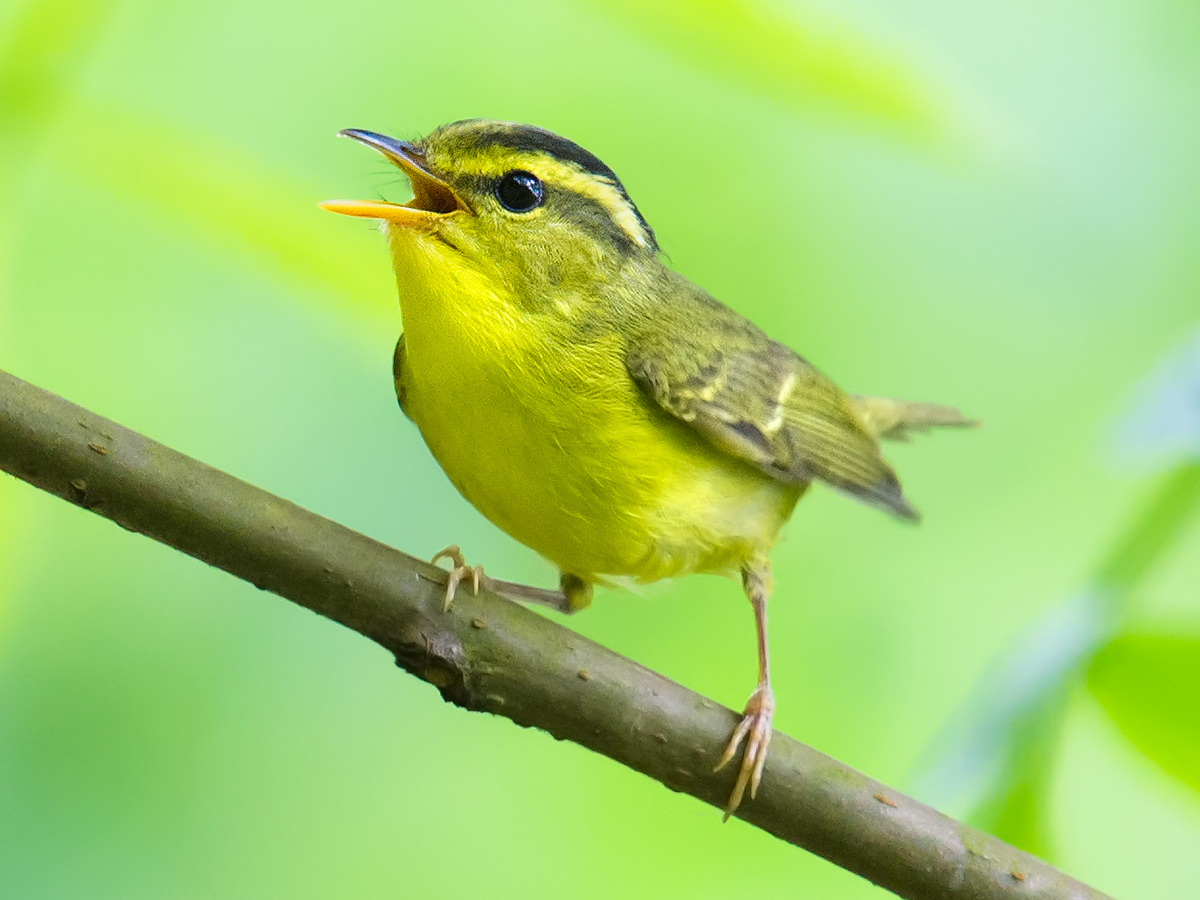
The Sulphur-breasted Warbler was waiting for me. This is a jewel of a Phylloscopus, golden yellow below with a boldly patterned head (golden supercilium and coronal stripe, black lateral crown stripes). Here is its high-pitched song:
Sulphur-breasted Warbler, song, 1 May (00:18; 1.5 MB)
We stopped at a creek containing Pygmy Cupwing. Relishing the chance to see this common but little-seen bird, I crawled into the vegetation near the source of the sound. Responding to playback, the cupwing came closer and closer until, like magic, it popped its head out from behind a rock just a meter from me. I watched this streamside specialist for several seconds.
At the same creek we played the song of Spotted Elachura. I played it so many times that I came to know the thin, high notes thoroughly—so much so that, long after I had turned the recording off and heard the song, I checked my speaker to make sure it was off. Fearing that my wishful thinking had caused a hallucination, I decided to wait before claiming a “tick.” The song stopped, but several minutes later, I heard it again, stronger. This time Elaine heard it also. I climbed up the steep creek bed, but I never heard the song again, and I have yet to see Spotted Elachura. But we know what we heard.
We found a female Cabot’s at 1320 m (4,330 ft.), below the temple, and a male at 1260 m (4,130 ft.).
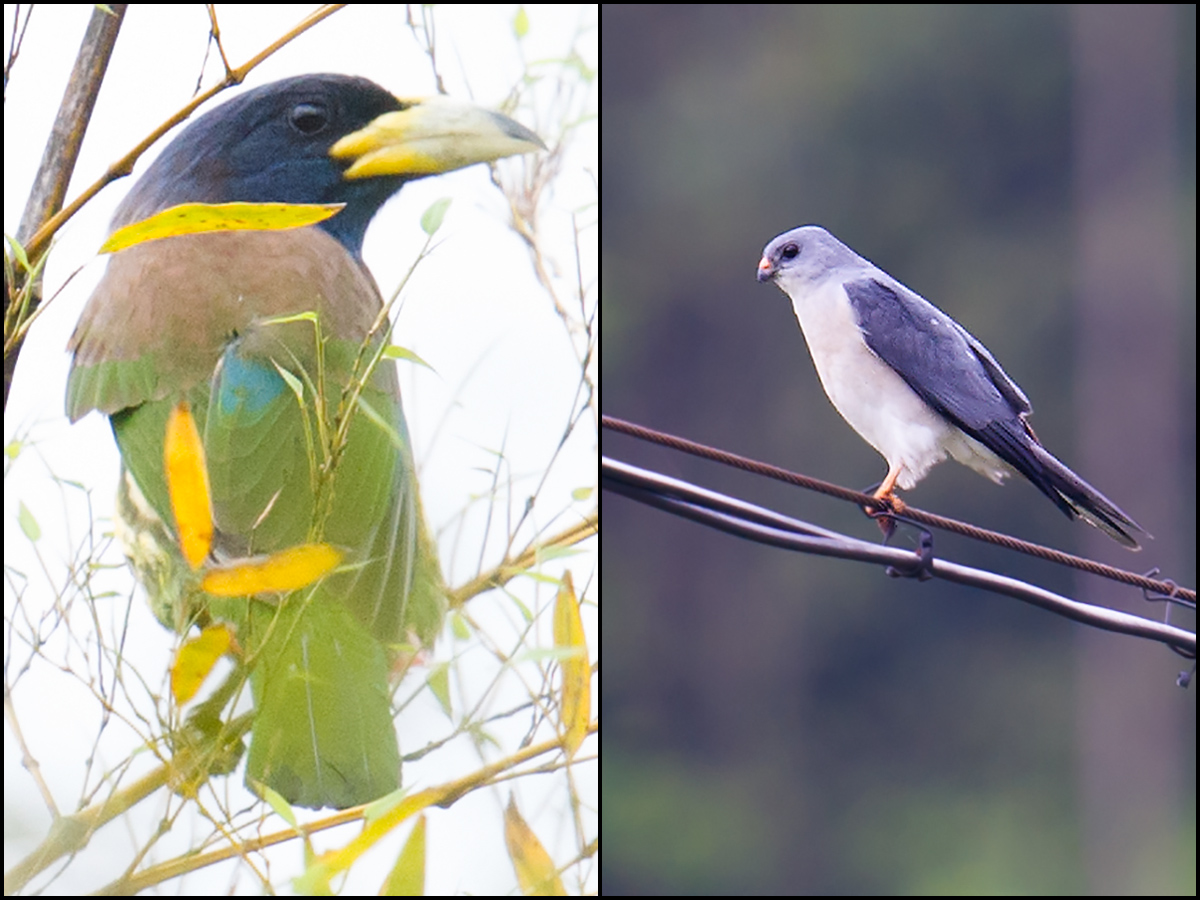
Michael Grunwell joined Elaine Du and me. We noted 45 species. As we drove down the X762 near the Fujian-Jiangxi border, Elaine spotted a Cabot’s Tragopan. At dusk, at the well-known spot for Elliot’s Pheasant (27.038276, 117.094207), we heard Dusky Fulvetta:
Dusky Fulvetta, short song, below Emeifeng, elev. 730 m (2,400 ft.), 2 May (0:03; 897 KB)
Rain, sometimes heavy, hampered us throughout the day but let up by late afternoon. Among the new species for our trip were Mandarin Duck, Brown Shrike, Yellow-bellied Prinia, Chinese Hwamei, Slaty-backed Forktail, Chestnut-bellied Rock Thrush, and Grey Wagtail.
We had the pleasure of leading Michael to two lifers today: Sulphur-breasted Warbler and Buff-throated Warbler.
The Mandarin Duck were seen at a small lake near the Elliot’s Pheasant site. The site is a row of fallow rice paddies at elev. 730 m (2,400 ft.).
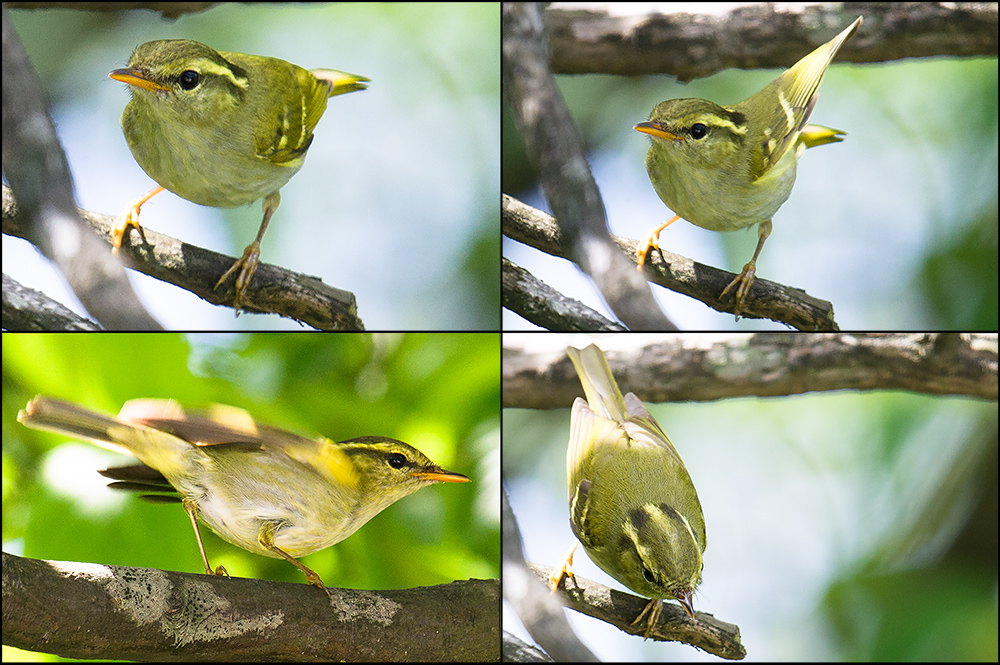
Michael Grunwell once again joined Elaine and me. Under brilliant blue skies, we noted 59 species. Hartert’s Leaf Warbler was a life bird for everyone and the third “southern” leaf warbler we found at Emeifeng, the others being Buff-throated Warbler and Sulphur-breasted Warbler. While driving we flushed 2 Cabot’s Tragopan and a White-necklaced Partridge; in the confusion Michael managed to spot the partridge. I found yet another Silver Pheasant. We heard 2 Buffy Laughingthrush. We struck out on Elliot’s Pheasant but while searching for it found Grey-sided Scimitar Babbler. Among the other additions to our trip list were 4 Blyth’s Shrike-babbler, 2 Grey-headed Parrotbill, Pallas’s Leaf Warbler, Verditer Flycatcher, and Fork-tailed Sunbird.
The Hartert’s Leaf Warbler was found on the road to the radio tower at an elevation of 1560 m (5,120 ft.). It flicked its wings one at a time, a territorial display. It sang powerfully in response to playback:
Hartert’s Leaf Warbler Phylloscopus goodsoni fokiensis, song, Emeifeng, Fujian, China, 3 May, by Craig Brelsford (0:24; 2 MB)
One of our goals for Emeifeng was to positively ID, photograph, and sound-record leaf warblers, including the warblers formerly placed in Seicercus. The task is easiest to perform in spring, when these birds are singing. We missed Kloss’s Leaf Warbler, but with our work on Hartert’s Leaf, Buff-throated, and Sulphur-breasted, as well as our coverage of White-spectacled Warbler Phylloscopus intermedius, we were more successful than I expected.
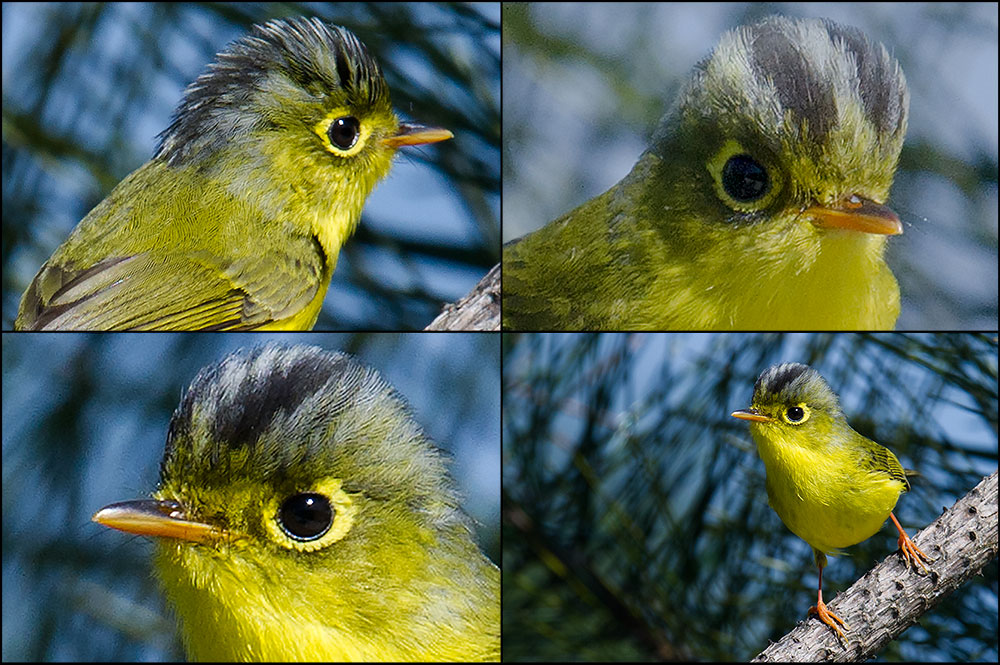
Mr. Deng drove us to the radio tower. At an elevation of ca. 1700 m or 5,580 ft., this is the highest point for miles around. The habitat here is alpine scrub, much unlike the forest stretching like a carpet below. Buff-throated Warbler greeted us at the top. We found an aggressive White-spectacled Warbler at 1620 m (5,320 ft.).
Visibility was excellent all day, and in the late afternoon the world was bathed in a golden hue. We left Emeifeng for Nanchang having accomplished most of our goals and with a feeling of satisfaction.
PHOTOS
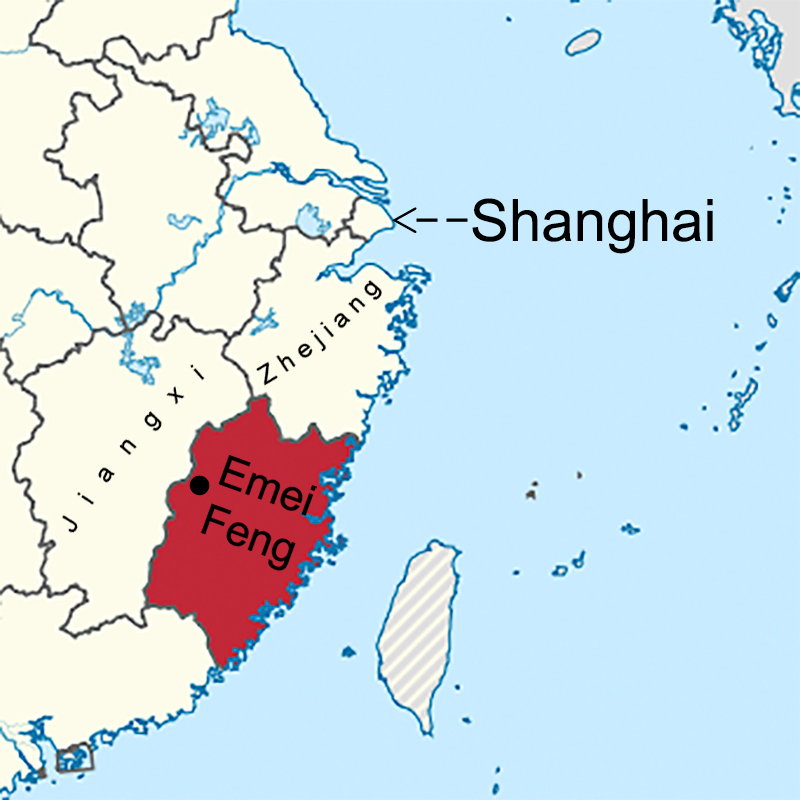
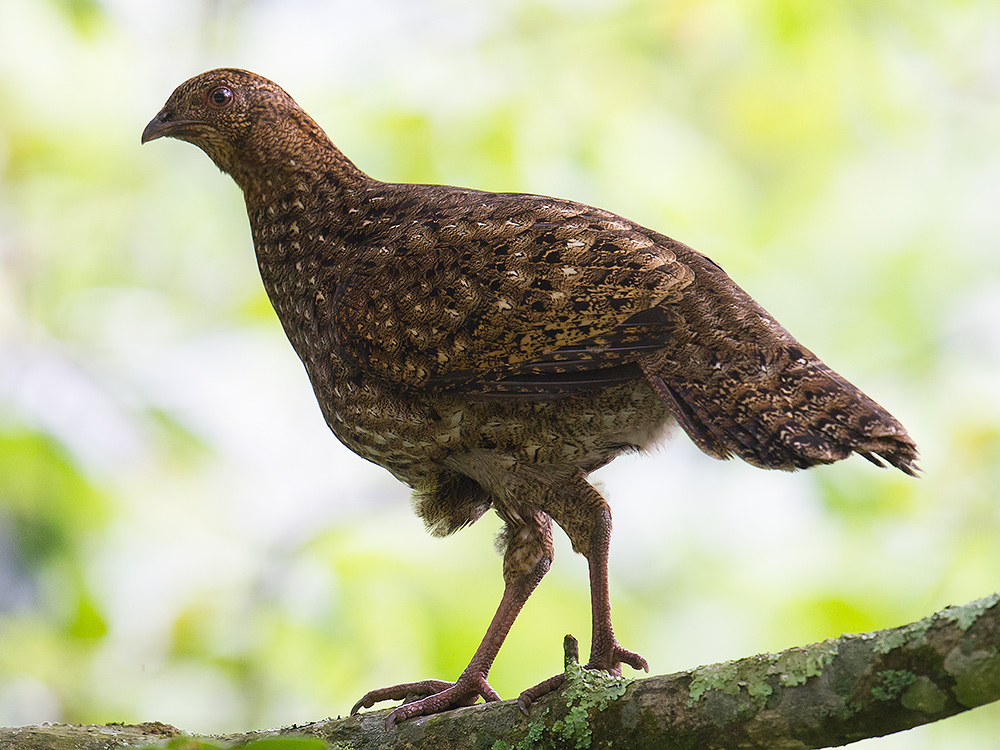
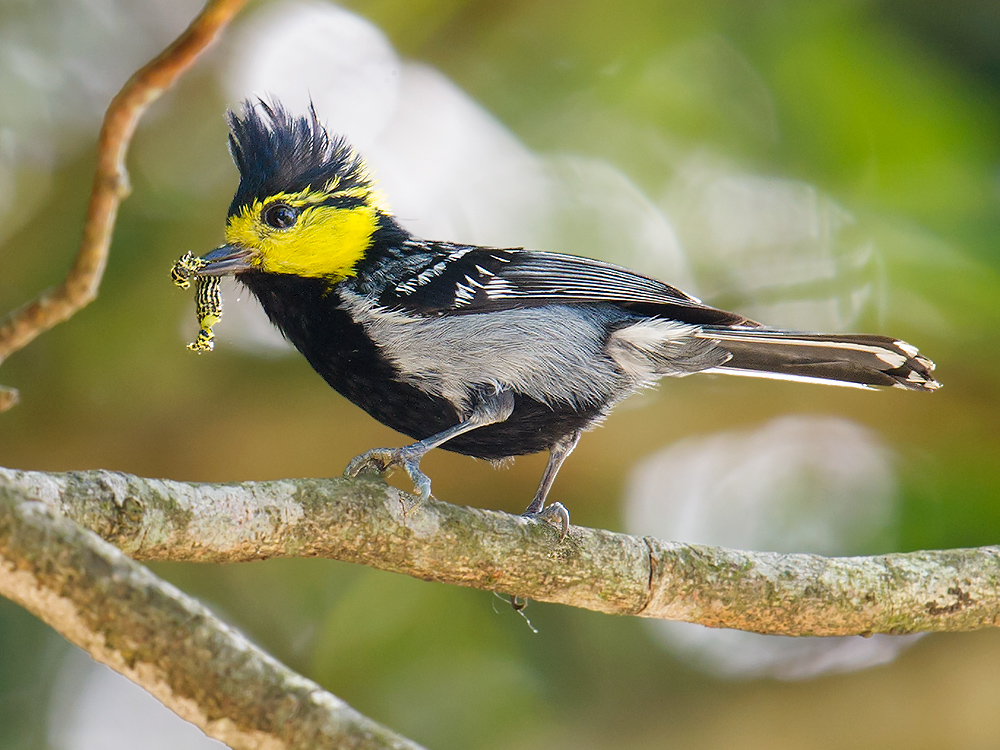
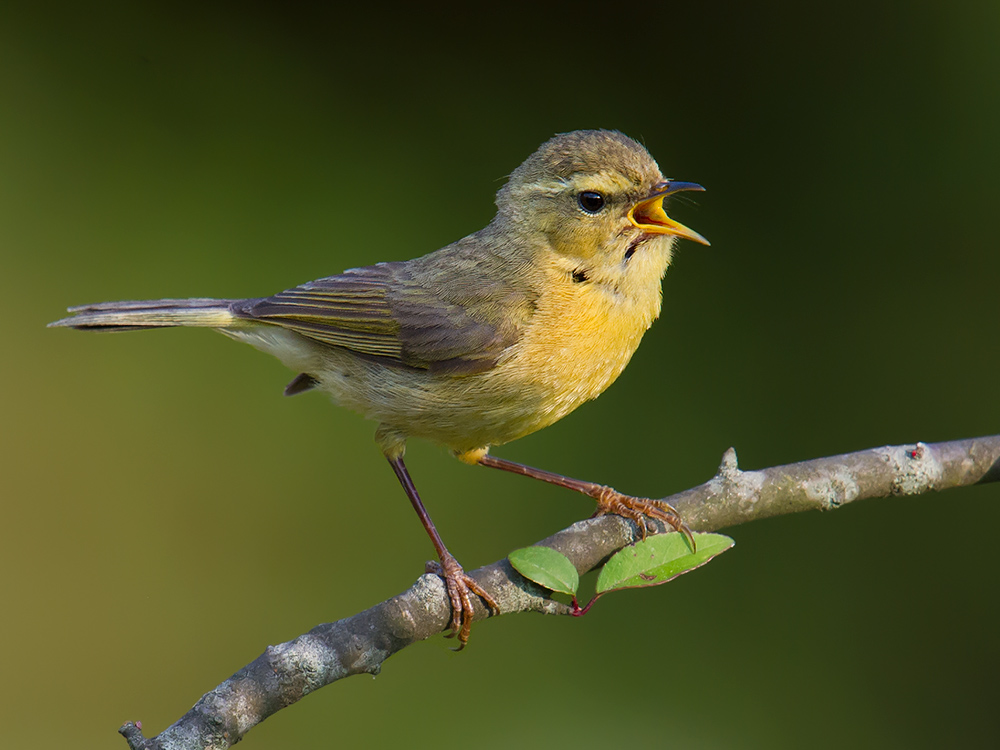
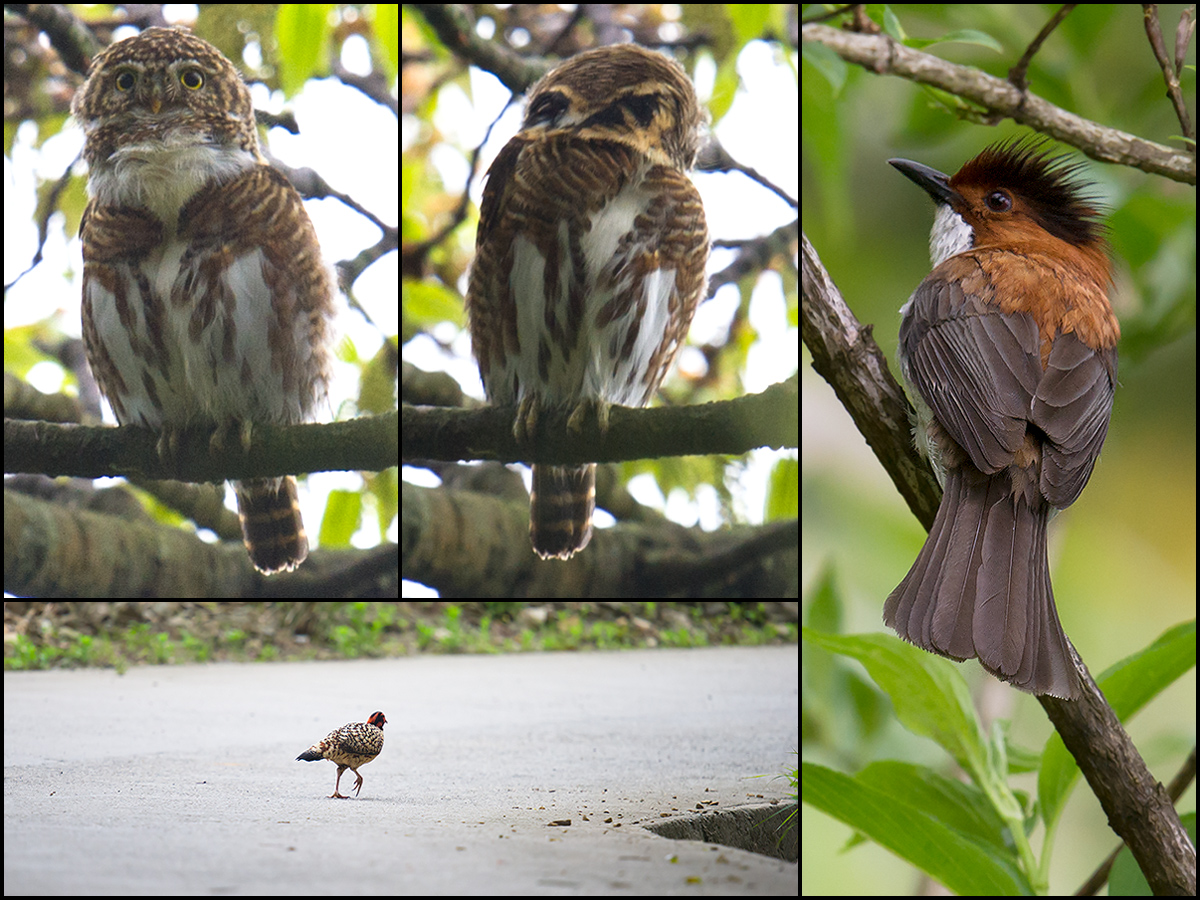
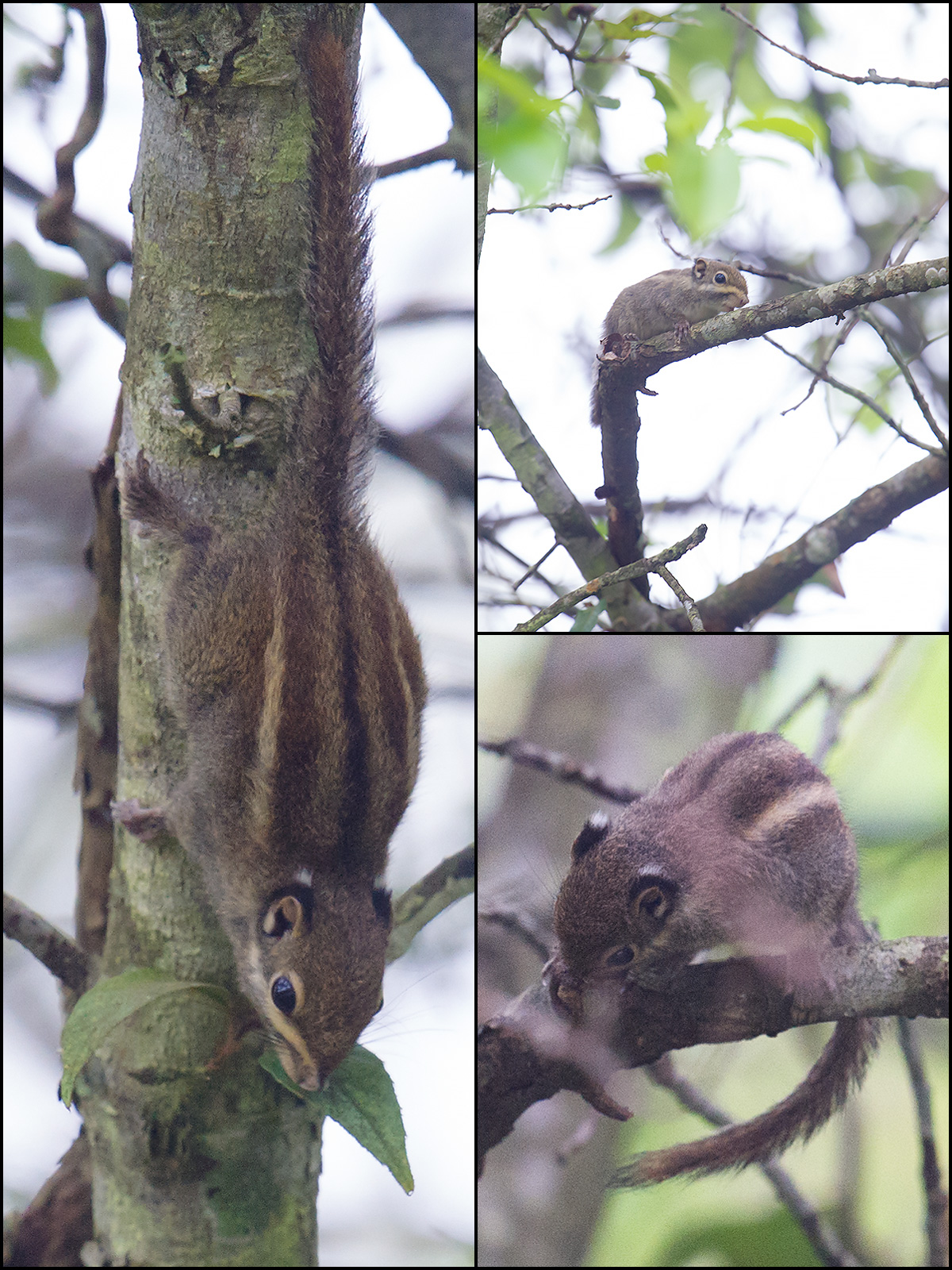
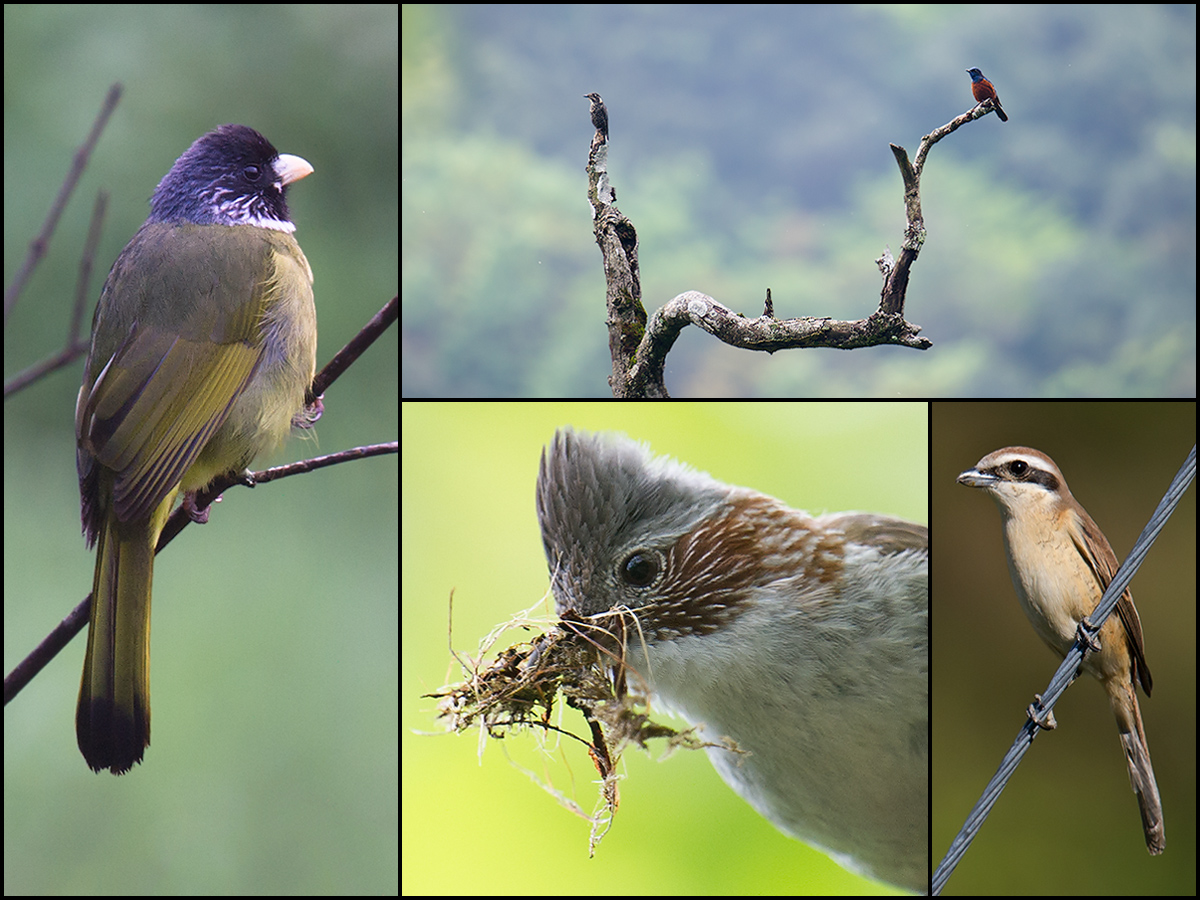
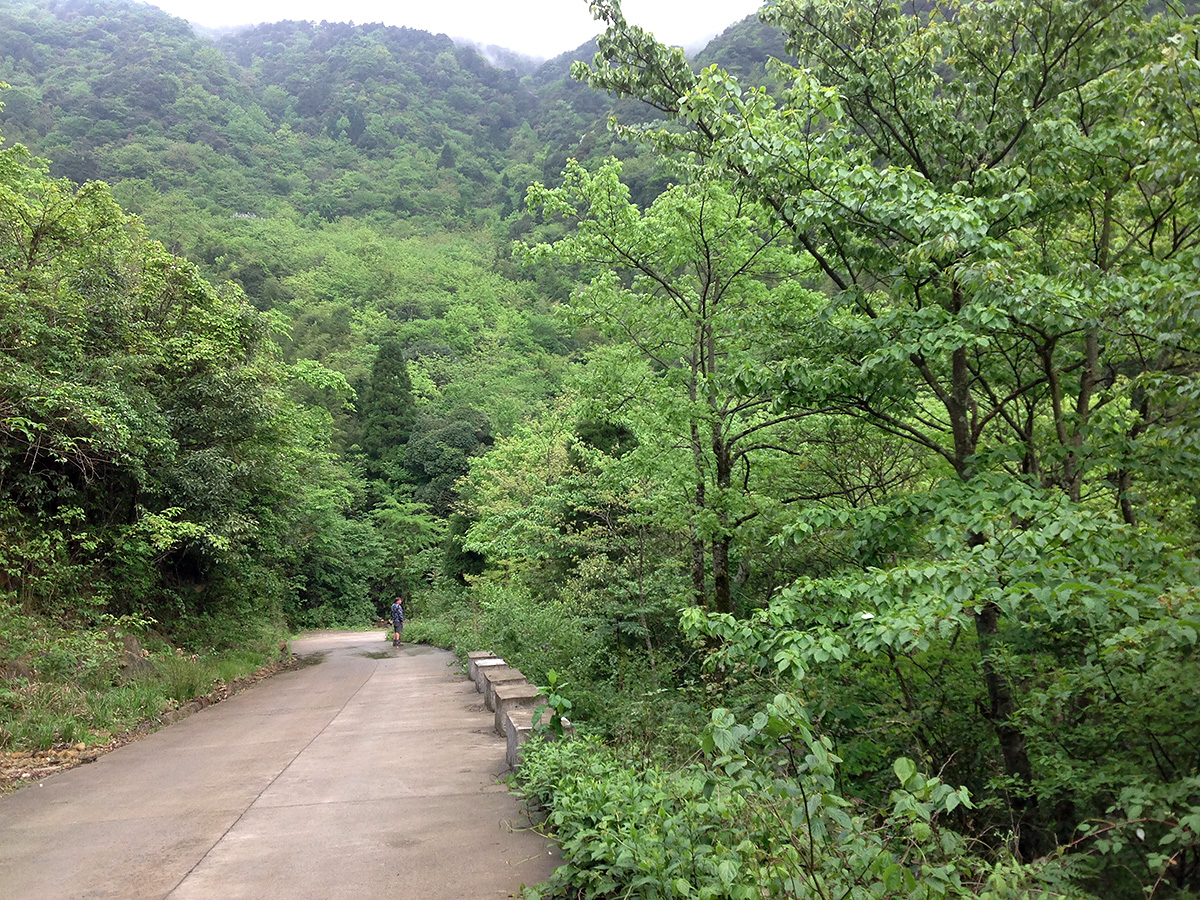
FURTHER READING
Study our coverage of Emeifeng and other great birding locations in southeast China:
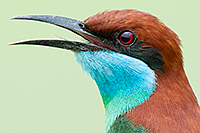
Birding Emeifeng, Fujian in Late May: On our return to Emeifeng, we noted new species Elliot’s Pheasant, Blue-throated Bee-eater, Crested Kingfisher, and, breeding in the lush, pristine mountaintop habitat near the temple, Brown Bush Warbler.
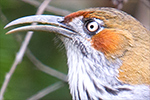
Birding Emeifeng in February: Conditions were springlike in the lower elevations, cool and quiet near the top. We noted Silver Pheasant at the summit lake, heard but never saw White-necklaced Partridge, and ticked China endemic Grey-sided Scimitar Babbler.
See also
• Home to Shanghai (Plus a Jaunt to Fujian)
• Trip Planner: Fuzhou National Forest Park
• Nonggang Babbler: From ‘New to Science’ to ‘Automatic Tick’
• Birding China’s Hainan Island
• Zhejiang’s Tianmu Mountains: A Must See Site for Shanghai Birders

